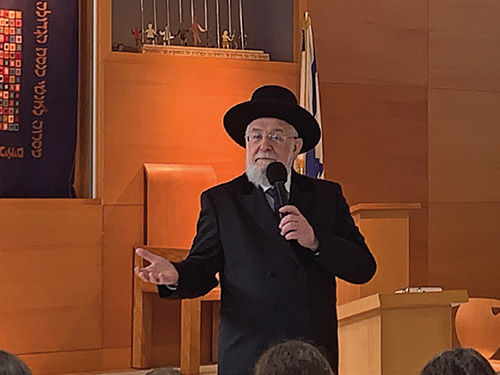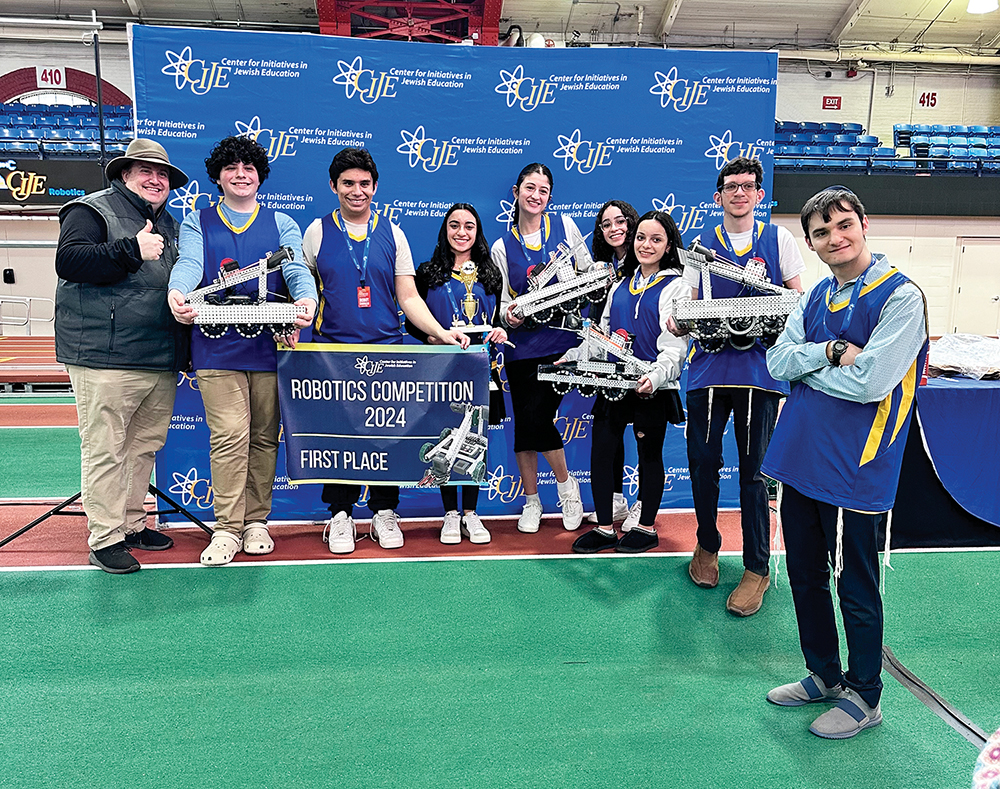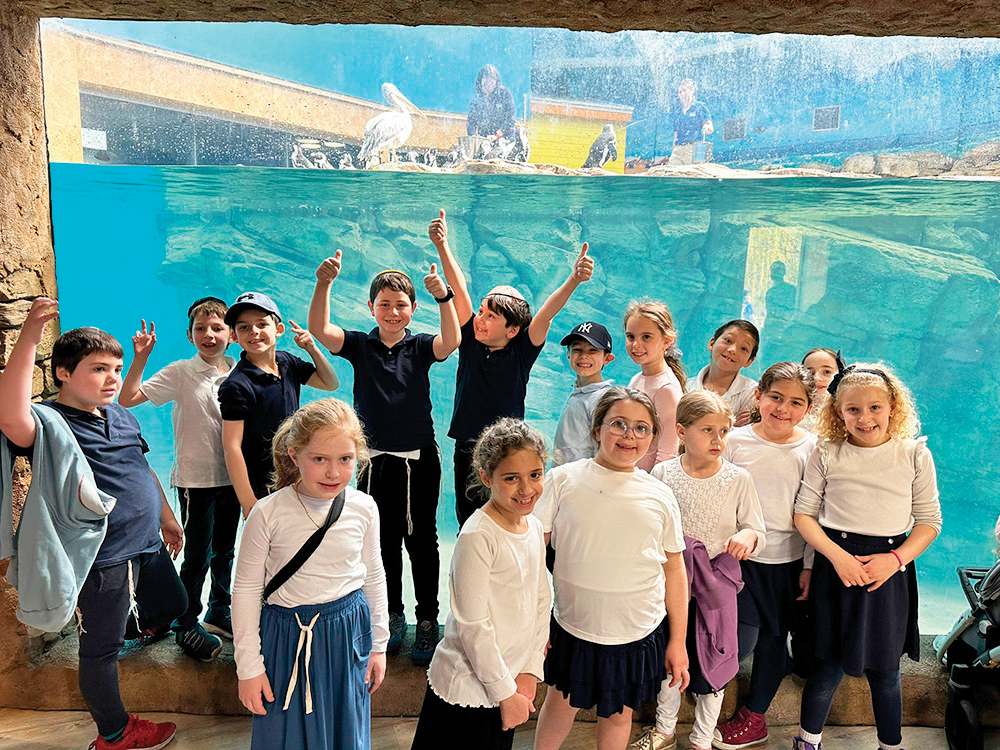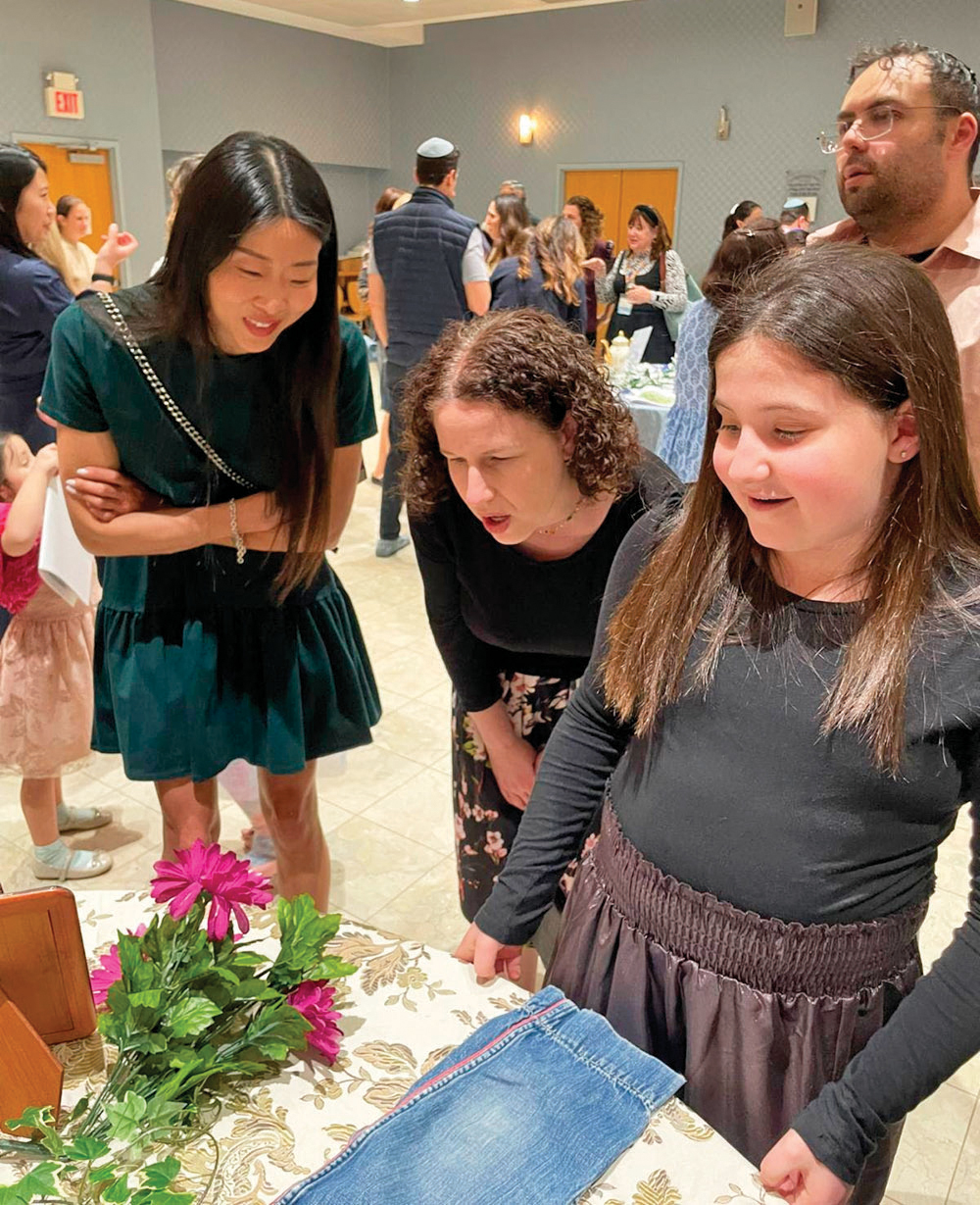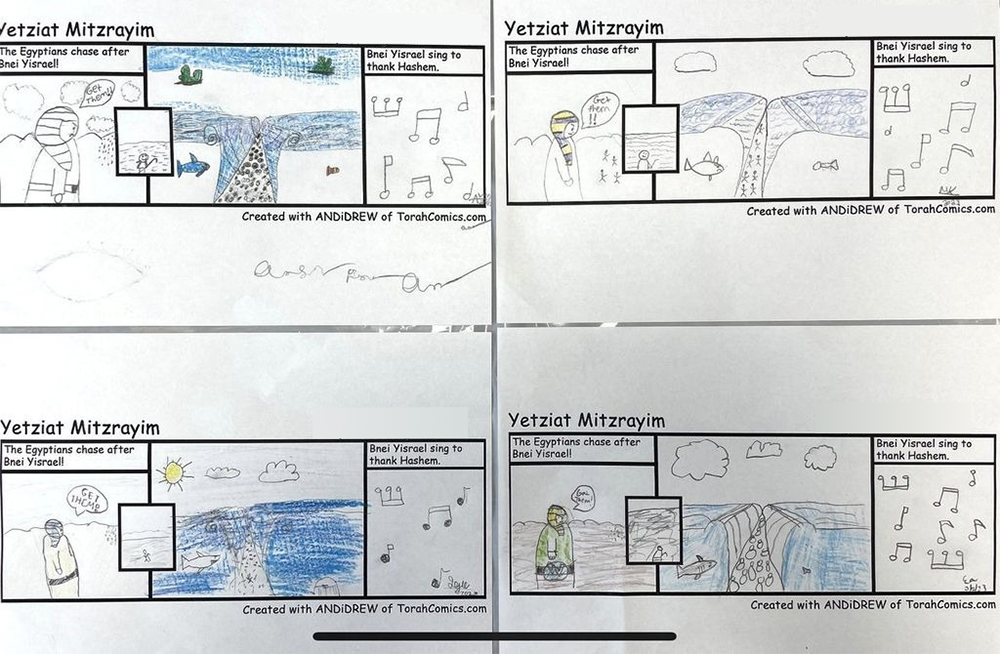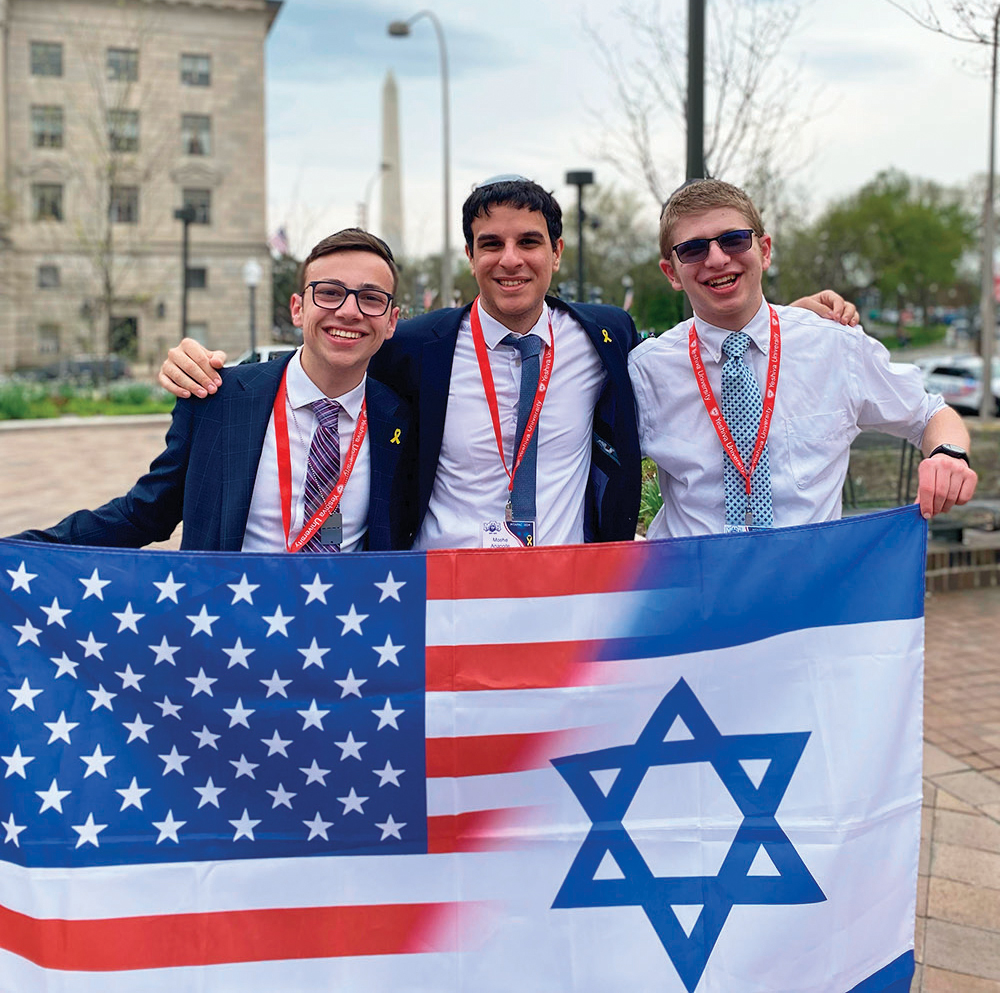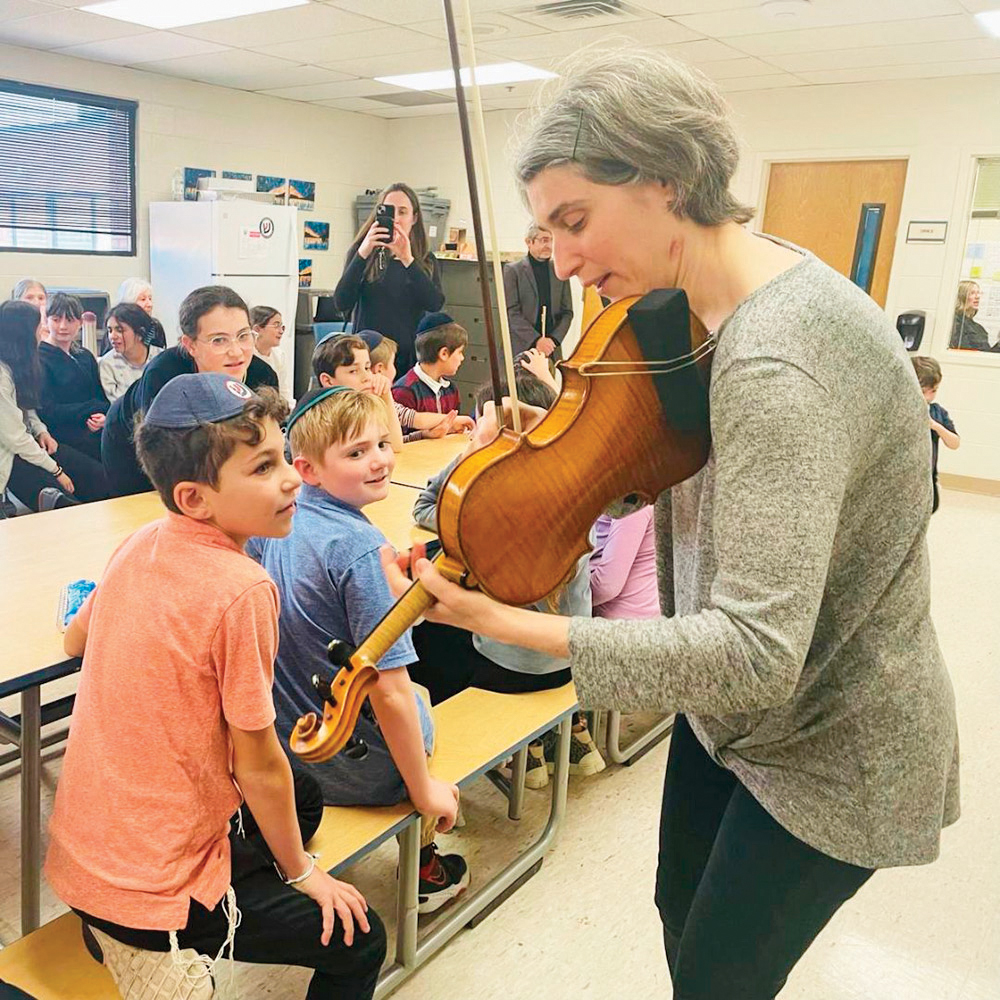


As part of a Shabbat visit to Englewood to bring awareness to the Israeli organization Ezer Mizion, Israel Prize winner Rabbi Yisrael Meir Lau, former Ashkenazi chief rabbi of Israel and chairman of Yad Vashem, spent Friday morning with the students of The Moriah School. After visiting with the early childhood students aged four to six, he spoke to two other groupings; the first through fourth graders, and the fifth through eighth grade students.
A smiling Rabbi Lau was greeted by the early childhood students, who waved Israeli flags and sang “Oseh Shalom Bimromav” and “Hatikvah.” He expressed joy at seeing the children and told them he had many grandchildren and even great grandchildren their age in Israel. Rabbi Lau told the school’s youngest students that he was not much older than them when he arrived in Israel in 1945, having been liberated at the age of eight by the American army from the Buchenwald concentration camp in Germany. He told them that the chaplain of that army division was Rabbi Herschel Schacter, z”tl, the father of Rabbi J.J. Schacter and one of America’s leading rabbis of the last century. He explained that he had recently met President Trump along with Prime Minister Benjamin Netanyahu, and together they had showed President Trump the now-iconic photograph of Rabbi Schacter leading the Buchenwald survivors in the Shavuot prayers, with now-Rabbi Lau, then a small child, sitting in the front row.
This well known story of Lulek, the small boy who survived the Holocaust, having been smuggled into Buchenwald by his brother Naftali in a sack he carried on his back; a child born as the 38th generation of a beloved Polish rabbinic dynasty, who rose, finally, to the post of Israel’s Ashkenazi chief rabbinate, is well known throughout Moriah. The teachers and administrators present were moved by the sensitivity he showed while also telling the truth to the children. Rabbi Lau’s unforgettable, against-all-odds story, which he shared in his book “Out of the Depths: The Story of a Child of Buchenwald Who Returned Home at Last,” was published in English in 2011.
After providing divrei bracha (words of blessing) to Moriah’s youngest students, Rabbi Lau spoke to the lower grade students, giving divrei chizuk (words of strength) on the name of their school. He reminded the students of Mount Moriah’s significance as the site of the Akeidat Yitzchak (the binding of Isaac) by Abraham, the place “where Hashem said he would always be our father, where he would always honor our covenant with us.”
“Many years later, there was a king of Israel, King Solomon, in Yerushalayim, he knew exactly where the Moriah mountain exists, and he bought the land for Mount Moriah, to put there the Beit Hamikdash. Later the second Beit Hamikdash was rebuilt on the same place. The heart of the Jewish people, for generations, was in Moriah. That is why the name of your school is so meaningful,” Rabbi Lau said.
To the school’s oldest students, Rabbi Lau explained that the five Hebrew letters of the word “Yisrael” include in it the first letters of the names of the avot and imahot, the fathers and mothers of all Jews. Then he asked the students if they had heard of such world rulers as Alexander the Great, the leader of the Greeks, Julius Caesar, the emperor of Rome, or Napoléon, the Emperor of France.
“Do you know, or ask your parents tonight, if they can point out one person, man or woman, boy or girl, who is a descendant of one of these emperors? Who is the great-great grandson of Alexander the Great, or Julius Caesar, Hannibal, or Napoléon?” he asked the group of several hundred pre- and post-bar/bat mitzvah aged students.
“No. They disappeared. No family. Nothing at all. But in Israel, every day we pray Shacharit, and some people come to the sefer Torah and make the bracha of the Kohanim. We know exactly who are the Kohanim, descendants of Aaron the Kohen, from 3,400 years ago!” he said.
“We don’t know who are the children of Napoléon or Julius Caesar, but we do know who are the children of Aaron HaKohen. Wow. Nothing compares in the whole world. Not one culture or religion can tell us they have descendents going back even a thousand years. No one except the Jewish people. Why? Because we follow in the footsteps; We go in the way of the fathers and the mothers, like Moshe and Aaron told us.”
“Today, the children of Aaron HaKohen, in every community, are known, because of aliyah HaTorah. We are loyal to our heritage and we embrace our tradition, and we live accordingly. Think about it. No other nation has such a history like the Jewish one. So you must be proud. Proud to know to whom you belong. Your family, which is immortal. You are a part of a family of eternity,” said Rabbi Lau.
Rabbi Daniel Alter, Moriah’s head of school, noted how impressive the visit felt for all the students. He said the most meaningful part of this experience was “the way our students were talking about Rabbi Lau following his visit. Parents told me that their children came home excited to describe the excitement they had over meeting such a great gadol, and the impact they felt from his visit,” said Rabbi Alter.
Rabbi Lau’s visit for Shabbat to the Ahavath Torah synagogue community, was organized on behalf of Ezer Mizion, an Israeli tzedakah organization. Ryan Hyman, on behalf of Ezer Mizion in the United States, shared that its bone marrow donor registry, the largest Jewish registry worldwide, is one of its many projects, but that it’s unique and special in that it is comprised entirely of IDF soldiers, ages 18 to 45, who are young, healthy and extraordinarily genetically diverse. When necessary, they can locate a member of their registry in just two hours.
“Rabbi Lau is a very close friend of Ezer Mizion, which is a lot larger than just the bone marrow registry,” said Hyman. “He visits our children every year. There is also a Holocaust survivor division, a mental health division, the division that delivers 750,000 meals annually to people who are in the hospitals and a paramedic division. But the bone marrow registry is our crown jewel. While most of our services are Israel-based, the bone marrow registry is truly global.”
By Elizabeth Kratz
�


